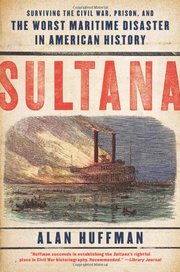|
Sunday marks the 100th anniversary of the sinking of the Titanic. It's a tragedy that has been commemorated in print, on film, and over the airwaves numerous times. Perhaps its continued fascination is due to the combination of hubris, glamour, social stratification, cowardice, bravery and sacrifice that swirl around the massive ocean liner and the events that led to her doom on the night of April 14-15, 1912. Other maritime disasters of similar magnitude have faded into obscurity; however, in the hands of a skillful writer, they can come to life in all its horrific immediacy: Lusitania by Diane Preston (2003). On May 7, 1915, as she closed in on the city of Liverpool, England and the end of her 101st eastbound crossing from New York City, the R.M.S. Lusitania, the pride of the Cunard Line and one of the most magnificent ocean liners afloat, steamed into the sites of a terrifying new weapon and became the casualty of a horrible new kind of warfare.  Just 11 miles off the southern coast of Ireland, she was struck by a torpedo fired from the German submarine. She exploded and sank within eighteen minutes. 1,198 lives, more than half of the passengers and crew, were lost. The deliberate and cold-blooded sinking of the Lusitania shocked the world. With the deaths of 128 American passengers, it was the event that spurred the United States to abandon its neutral stance and enter the armageddon we now call World War I.  Sultana: Surviving the Civil War, Prison and the Worst Maritime Disaster in American History by Alan Huffman (2009) The title says it all. And it's unbelievable that, outside of American history professors and Civil War buffs, this tragedy has been absolutely forgotten. In April 1865, the steamboat Sultana moved up the Mississippi River, its engines straining under the weight of twenty-four hundred passengers—mostly Union soldiers, recently released from Confederate prison camps. By law, she was only allowed to carry 376 persons, including the crew. At 2 a.m., three of Sultana's four boilers exploded. Within twenty minutes, the boat went down in flames, and an estimated seventeen hundred lives were lost. Those who did not perish in the fire drowned in the cold, fast-moving river. The other events of that April -- the end of the war, the assassination of President Lincoln, the hunt for John Wilkes Booth -- overshadowed this tragedy, which was, by sheer loss of life, the worst maritime disaster in U.S. history. The author captures this harrowing story in vivid detail through the experiences of four individual soldiers who survived the Civil War's final hell to make it back home.  Into the Mist: The Story of the Empress of Ireland by Ann Renaud (2010). In the early hours of May 29, 1914, the Empress of Ireland, the crown jewel of the Canadian Pacific Line, plunged to the bottom of the St. Lawrence River in just 14 minutes, after colliding with the SS Sorstad, a coal freighter. Over 1,000 passengers and crew members died. But there's more to the story than just disaster. The ocean liner's true legacy is the significant role it played in the building of Canada. During the ship's many crossings between Canada and England during its years of service from 1906 to 1914, it carried royalty, politicians, scientists, authors, actors, captains of industry, and military servicemen, but most important, it ferried more than 115,000 hopeful immigrants from Europe to build new lives on Canadian soil. The author paints a moving portrait of a ship and its time of glory.
1 Comment
12/9/2021 12:41:02 am
Eumaxindia specializing in Radio Advertising like suryan fm,redfm,big92.7fm,radio city,hello106.4fm.we are provides all types of online radio advertising.
Reply
Leave a Reply. |
AuthorTo find out more about me, click on the Not Your Average Jo tab. Archives
February 2024
Categories
All
|
 RSS Feed
RSS Feed